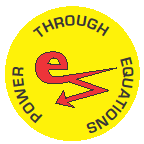Amateur Radio Signal Propagation Information
Solar-Terrestrial Data
Aurora
30 Minute Forcast from Space Weather Prediction Center
Southern Hemisphere Map

How To Read Propagation Numbers
The A index [ LOW is GOOD ]
•1 to 6 is BEST
•7 to 9 is OK
•11 or more is BAD
Represents the overall geomagnetic condition of the ionosphere ("Ap" if averaged
from the Kp-Index) (an average of the eight 3-hour K-Indices) ('A' referring
to amplitude) over a given 24 hour period, ranging (linearly) typically from
1-100 but theoretically up to 400.
A lower A-Index generally suggests better propagation on the 10, 12, 15, 17,
& 20 Meter Bands; a low & steady Ap-Index generally suggest good propagation
on the 30, 40, 60, 80, & 160 Meter Bands.
SFI index [ HIGH is GOOD ]
•70 NOT GOOD
•80 GOOD
•90 BETTER
•100+ BEST
The measure of total radio emissions from the sun at 10.7cm (2800 MHz), on a
scale of 60 (no sunspots) to 300, generally corresponding to the sunspot level,
but being too low in energy to cause ionization, not related to the ionization
level of the Ionosphere.
Higher Solar Flux generally suggests better propagation on the 10, 12, 15, 17,
& 20 Meter Bands; Solar Flux rarely affects the 30, 40, 60, 80, & 160 Meter
Bands.
K index [ LOW is GOOD ]
•0 or 1 is BEST
•2 is OK
•3 or more is BAD
•5 is VERY VERY BAD
The overall geomagnetic condition of the ionosphere ("Kp" if averaged over the
planet) over the past 3 hours, measured by 13 magnetometers between 46 & 63
degrees of latitude, and ranging quasi-logarithmically from 0-9. Designed to
detect solar particle radiation by its magnetic effect. A higher K-index generally
means worse HF conditions.
A lower K-Index generally suggests better propagation on the 10, 12, 15, 17,
& 20 Meter Bands; a low & steady Kp-Index generally suggest good propagation
on the 30, 40, 60, 80, & 160 Meter Bands.
Home
| Electronics & Electrical |
Motors & Mechanics
| Various Conversions |
Radio |
About |Guest Book
| Privacy Policy |
Terms of Use
![]()
Copyright ©2024 KC9AOP. All Rights Reserved.


